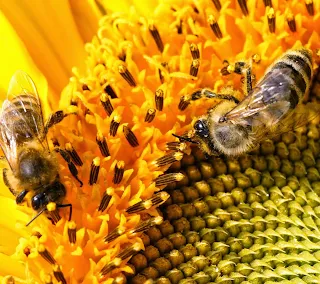There are different beekeeping systems used and these include
(a) Honey hunting and bee-killing
The long relationship between humans and honey bees started with honey hunting in the wild. Honey hunting continues in some communities to date. It involves killing the bees in the wild colony so as to obtain combs containing honey and brood (larvae and pupae). This primitive method involves use of open fire to kill the bees, eventually destroying not only the colony but also the environment as bushes are set on fire in the process of harvesting honey.
Advantages
1) Minimal work and knowledge is required
2) There is no investment or expenditure involved
Disadvantages
1) Nests and bees are destroyed
2) Bees may become aggressive
3) Remaining bees may abscond
4) Access to the nests can be far and dangerous
5) Combs get mixed up during harvesting hence producing poor quality honey
6) Environment is destroyed if trees are cut down or set on fire.
To reduce the hardship and unpredictability of harvesting from wild colonies, people found ways to increase their control over bees through the ownership and management of colonies kept in hives. These beekeeping systems range from the local/traditional methods to the modern systems.
(b) Bee-having
This is an intermediate step between honey hunting/bee-killing and beekeeping. In bee-having, bees are housed in hollowed sections of tree trunks, clay pots, gourds, bark hives, or woven twigs and mud baskets. Combs containing honey are fixed and removed periodically. The farmer provides protection to the bee colony in return for periodic harvests of honey, wax and other bee products.
The idea is to maintain the colony for future harvests instead of destroying it for a one-time harvest. Both bee-killing and bee-having are carried on with very little understanding of the biology of the bee. It is not uncommon to find bee-having among farmers who have relatively sophisticated equipment which allows for management of their colonies. They remain bee-havers because they lack the training to make optimum use of their equipment. This method is sometimes referred to as local/traditional.
Advantages
a) Bees and nests are conserved
b)Minimum cost (cheap locally available materials and labor)
c)Suitable for defensive bees
d) Less risky than honey hunting
e) Hives can be placed near home
Disadvantages
1) Combs are fixed and must be broken during harvesting
2) Honey yields are modest
3) Hive inspection is difficult.
(c) Beekeeping
Beekeeping implies the manipulation of a bee colony based on some understanding of the bees. This gives great ease of management and harvesting for higher yields and better quality of honey. Beekeeping therefore can be lucrative at any level of technology, but the level used should fit together with the local cultural and economic reality.
There are 3 categories of beekeeping namely
(i) Local/traditional beekeeping in fixed comb hives.
(ii) Transitional (between local/traditional beekeeping and modern beekeeping) in top bar hives.
(iii) Modern beekeeping: in frame hives
Advantages
a) Hives can be managed efficiently
b) Bees are less disturbed and therefore less defensive
c) Hives are easy to visit, harvest, treat, feed, unite and divide
d) Hives can be made to the right volume and combs are movable
e) Honey and beeswax can be of good quality
Disadvantages
a) Equipment can be costly
b) External financial support and donated equipment may be required
c) Hive must be made very precisely in order to work effectively
d) Diseases and pests can be spread easily due to movement of equipments.
e) More knowledge and skills are required

